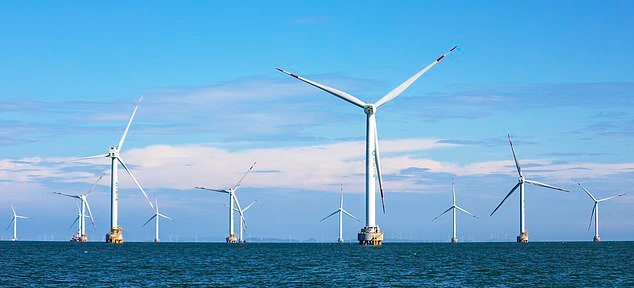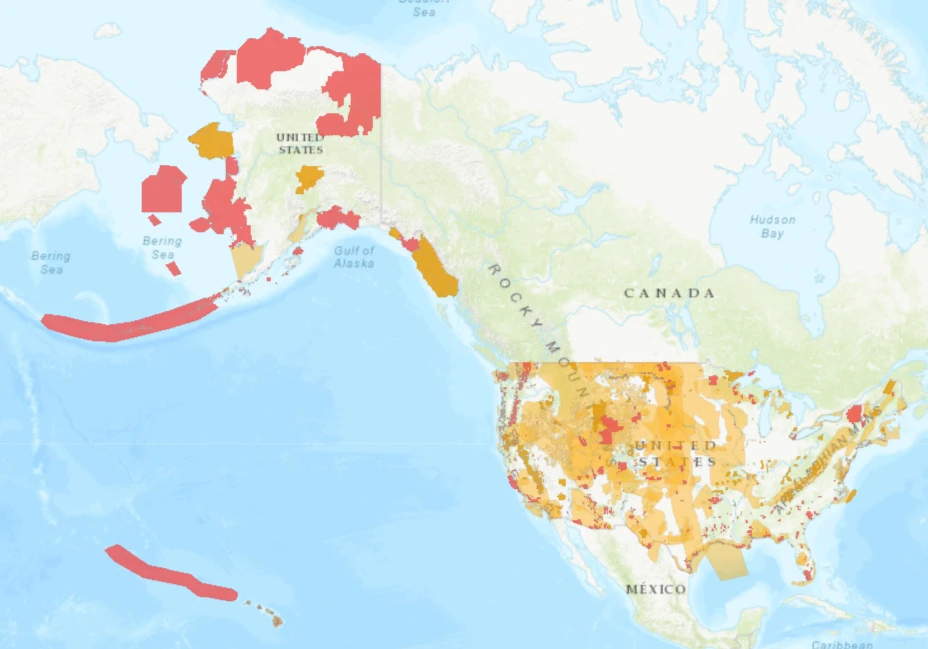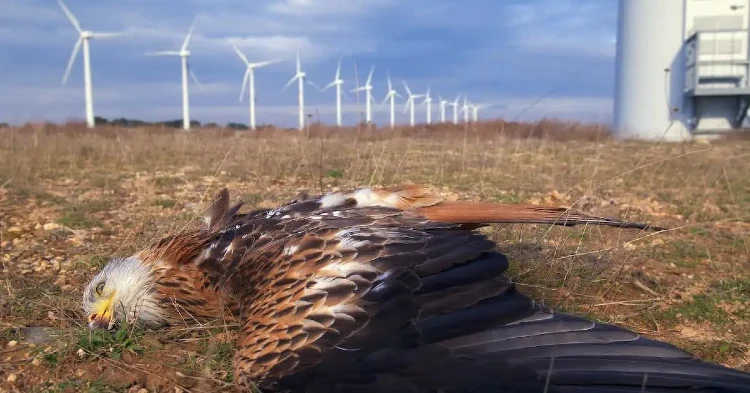Picture this: majestic eagles and flocks of migratory birds soaring through the sky. Now, imagine these same birds facing giant spinning blades.
Unfortunately, this isn’t just a bad dream; it’s a reality for countless birds in the United States due to wind turbines.
Ten years ago, back in 2013, a study revealed that a staggering 573,000 birds met their end because of these turbines. And don’t even get us started on what these so-called renewable behemoths have done to the bat populations!
Given the growth of wind farms – now boasting over 60,000 turbines across 40 states, including places like Puerto Rico and Guam – it’s worrisome to think that this number might have soared even higher.
Now, here’s something to scratch your head about: despite this significant threat to birdlife, wind turbines only generated a teeny-tiny 5.55% of America’s total electricity in 2016.
And here’s the kicker: the plan is to hike that up to 20% by 2030. That means even more turbines and, sadly, possibly more feathered casualties.
But wait, who’s counting these poor birds? It seems the very people paid by the wind industry. That’s like letting the fox guard the hen house!
Some places, like the Altamont Wind Resource Area, have already seen more than 2,000 Golden Eagles perish due to turbines.
It’s especially nerve-wracking for Bald Eagles. These majestic birds love their fish dinners. So, building wind farms near coastlines or lakes could send their death rates soaring. And that’s on top of the damage these offshore installations are already doing to whales up and down the coast.

For a bit of perspective, imagine a tower as tall as a 20-story building with enormous fan blades. That’s your average wind turbine, standing at about 212 feet and covering a massive area with its spinning blades.
When they’re building these giants, sometimes mountains are blasted away and new roads carved out, changing the land and home for many animals.
Dr. Michael Hutchins, a big bird enthusiast from the American Bird Conservancy, said wind turbines are growing into a huge threat for birds. Many turbines are popping up in places that birds call home or use as rest stops during migration. Clearly, something’s got to give.
To tackle this issue, groups like the American Eagle Foundation are pushing for a smarter approach to wind energy. They want careful checks, the right places chosen for wind farms, and ways to make sure birds are safe. If we carry on this way, it’s believed that by 2030, wind turbines might be responsible for the end of over 1.4 million birds.
To make matters more complex, a plan introduced back in 2016 might let wind energy companies harm Bald and Golden Eagles for 30 years without being transparent about how many birds get hurt. This is like giving someone a free pass to harm these national treasures.
Even though groups like the American Bird Conservancy are asking for proper plans to protect birds and their homes, it seems there’s always an excuse – like not having enough money.
The Real Impact of Green Energy on Birds
Dr. Hutchins puts it bluntly, “Just because energy is alternative, doesn’t mean it’s all good if birds are paying the price.”
He stresses that while fighting climate change is a must, we shouldn’t forget our feathered friends. We don’t have to make that choice. Smarter rules, better science, and thinking ahead can make a world of difference.
The Biggest Culprits
The American Bird Conservancy (ABC) listed ten wind energy spots in the U.S. that could be trouble for birds. Places from California to Wyoming have some projects that have already hurt birds in the past. The big problem? These spots weren’t chosen with birds in mind, and sometimes, efforts to fix things after the fact just don’t cut it.

Hawaii Leads the Way
Dr. Hutchins once wrote about how Hawaii is setting a good example. While they’re not perfect, they’ve got some smart ideas we could all learn from. In Hawaii, some places are a no-go for wind turbines, especially when they’re home to endangered birds. One island, Kauai, is entirely off-limits to wind energy plans. Mainland America might want to borrow a leaf from Hawaii’s playbook!
Bald Eagles in the Spotlight
Bald Eagles love fish, and that means they hang out near big lakes and waterways. So, guess where it’s a bad idea to place turbines? Right around those areas. A 2016 study by U.S. Fish & Wildlife Service warned about putting turbines near the Great Lakes. They said birds, especially migratory ones, could be in big trouble.
A project in New York has got a lot of bird lovers worried. Why? The turbines there are gigantic – twice as big as usual! And they’re near a place where tons of birds, including Bald Eagles, hang out.
The Rochester Birding Association in New York has chimed in, worried about the impact of these turbines. Tons of birds, from songbirds to raptors, use the area. Despite concerns from the community and even the USFWS, the company behind the project seems to be moving full steam ahead.
While the U.S. Fish & Wildlife Service recommends keeping turbines at least 3 miles away from the Great Lakes, the American Bird Conservancy thinks it should be 5 miles. A recent study even hints at maybe keeping them 10 miles away. This study kept a close eye on bird movements, and it’s clear: birds and bats are super active around these lakes, especially at night.
And let’s not forget that nine years ago, Duke Energy Renewables (the name is a little on the nose in my opinion) pled guilty and paid out $1 million for killing at least 14 bald eagles over just three years at the company’s Wyoming wind energy plants.
More To Discover
A Glimpse at Tomorrow
Is there hope on the horizon? Libby Sander from the American Bird Conservancy thinks there is in the new wind turbine designs that claim to be bird-friendly. From sails to tubes, innovators are trying different tricks to harvest wind without hurting birds.
But, as always, it’s crucial to test these new ideas thoroughly. We need to make sure these claims aren’t just a more believable form of greenwashing… and you know we will!





















